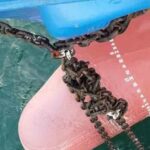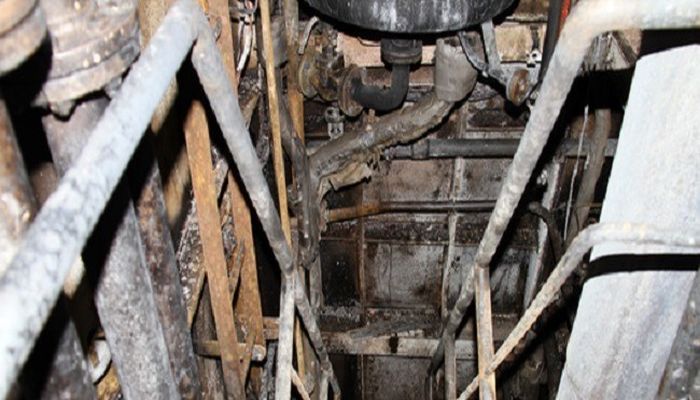Real Life Incident: Rescue Boat Davit Winch Unable To Stop Hoisting
A rescue boat was being recovered after normal deployment and maintenance. At one point the davit operator tried to stop the raising operation but the hoist button, emergency stop and limit switch circuits all failed to stop the winch from hoisting. Thankfully, personnel were able to disconnect the electrical power via the 480V main breaker before the boat contacted the davit, avoiding serious damages and injury to personnel.
Metallurgical analysis carried out after the event found that the failure occurred when the winch control contactors fused together due to the duty rating being exceeded. Additionally, it appears that the contractors were not rated for intermittent cycling (repeated start/stop sequences) of the winch. After an inspection on other installations, several contactors showed evidence of overheating and indications of welded and scorched contacts were found.
Intermittent cycling is a common practice during the recovery of a lifeboat or rescue boat into the stowed position. For example, a winch may be cycled after the boat has cleared the water to verify the release gear condition. Or again, it may be cycled as the boat approaches the davit guides/stops to reduce momentum. While intermittent cycling is commonly employed for a safe recovery process, it may in fact cause power to exceed the design and duty ratings of the electrical components.
Lessons learned
- Verify the condition of winch motor contactors and replace any contactors that show signs of excessive wear, overheating, or welding.
- Check the duty cycle ratings of lifeboat and rescue boat davit electrical components and compare those ratings to recommended and commonly-practised boat recovery procedures/processes.
- Confirm the design of the davit safety devices (ie, E-stop and limit switches) to see if they will secure electrical power to the motor in the event of welded contacts.
- Implement training for all personnel that operate the davits to ensure awareness related to electrical duty cycles and the actions needed to isolate power in the event of a welded winch motor contactor.
Do you have info to share with us ? Suggest a correction
- Real Life Incident: Vessel Collision in Good Visibility
- Real Life Incident: Severe Injury To Deck Crew While Leaving Berth
- Real Life Incident: Departure Damage in Very Restricted Waterway
- Real Life Incident: Low Situational Awareness Has High Impact Consequence
- Real Life Incident: Fouled Anchor in a Designated Anchorage
- Real Life Incident: Fire On Barge Carrying Scrap Metal Causes $7 Million Worth Of Damage
Latest Case studies Articles You Would Like:
Subscribe To Our Newsletters
By subscribing, you agree to our Privacy Policy and may receive occasional deal communications; you can unsubscribe anytime.
Web Stories





















